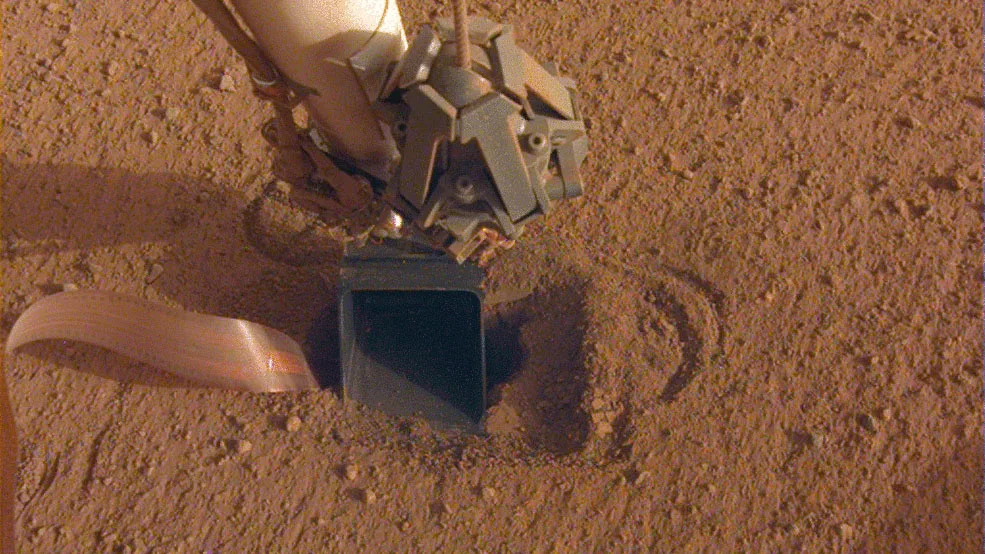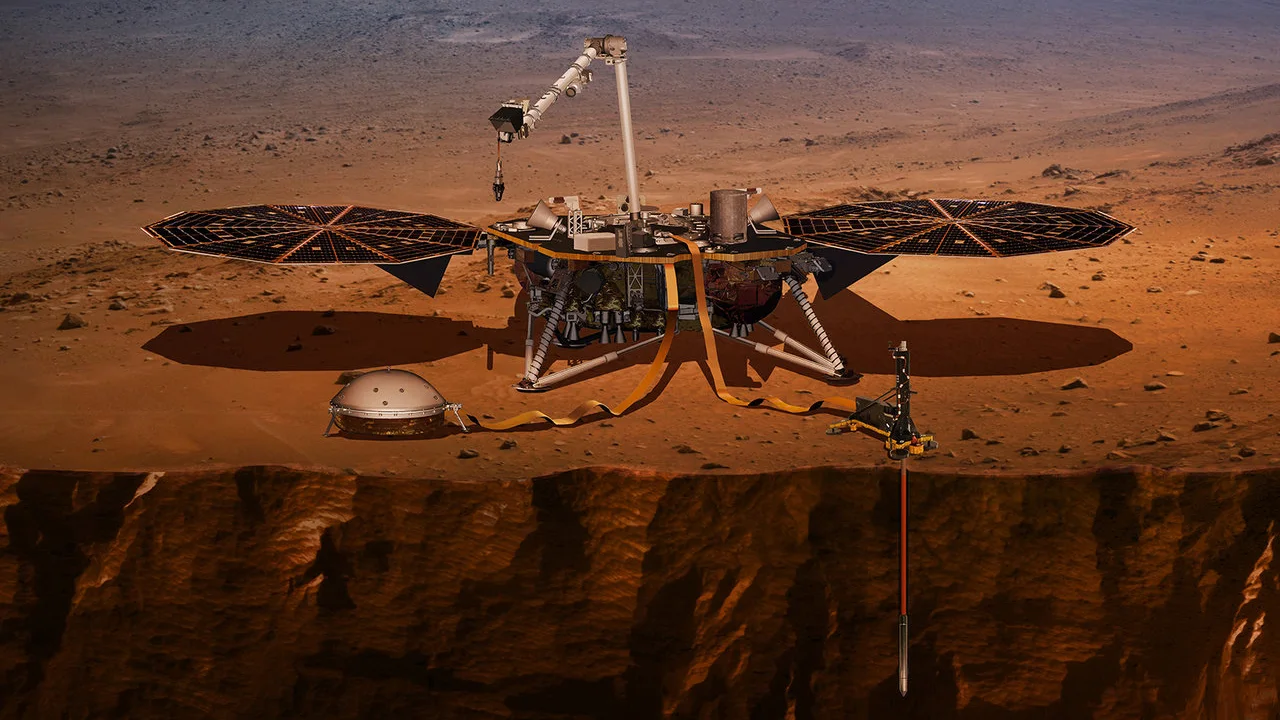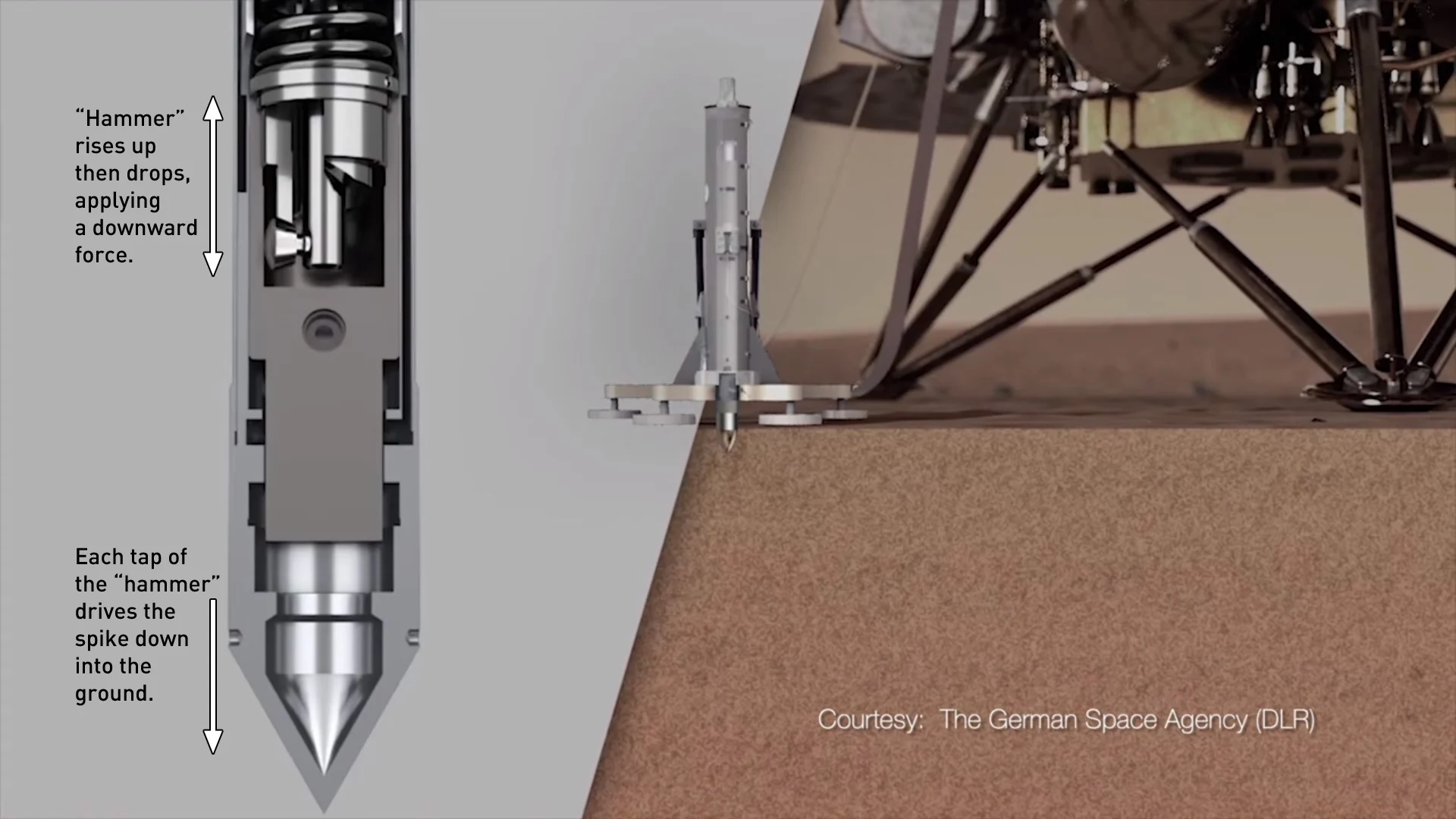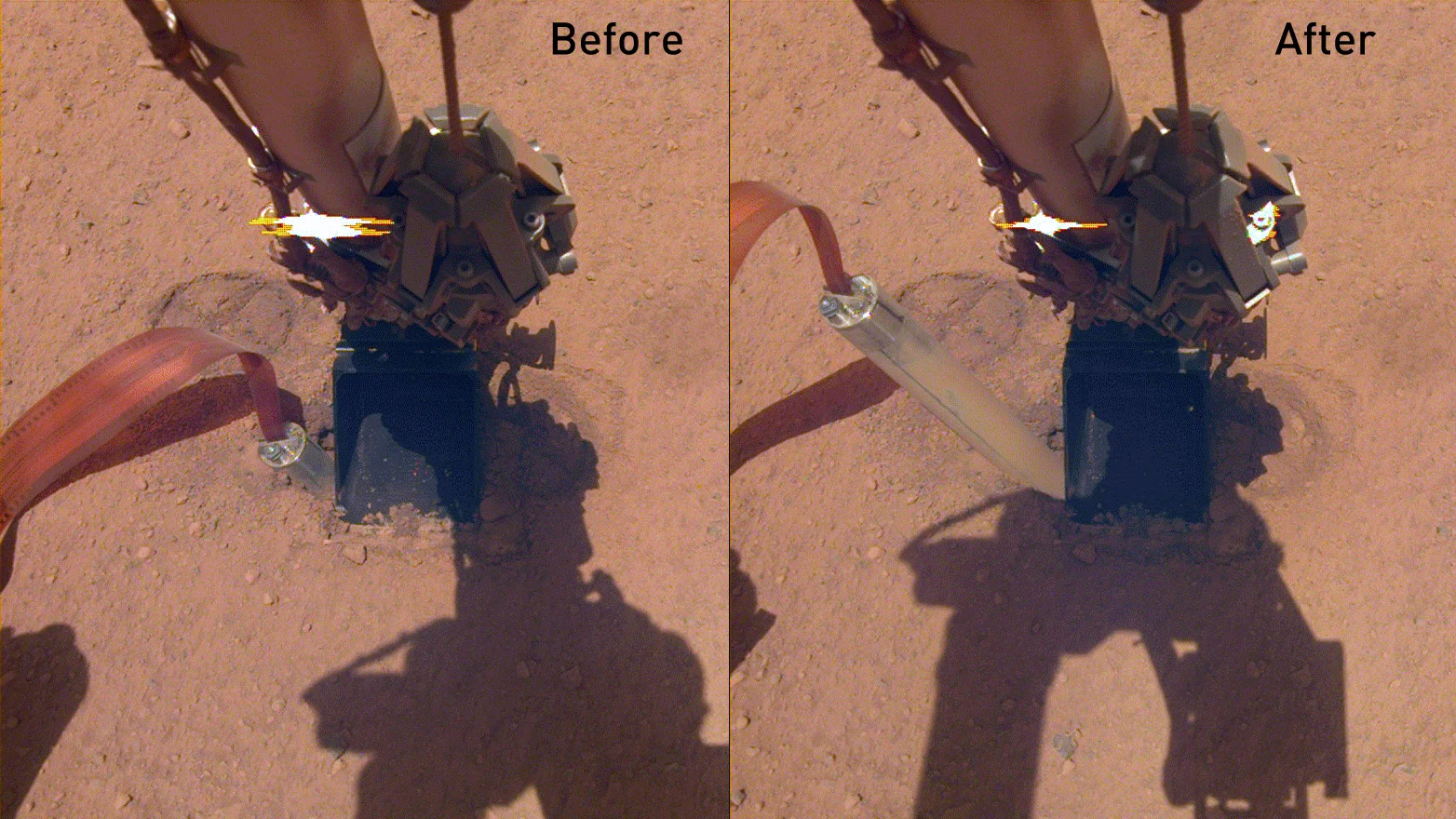
NASA InSight's beleaguered 'Mole' suffers another setback
Mars is turning out to be one tough nut to crack
One of the primary missions of NASA's InSight lander is still struggling to get started, due to the bizarre nature of the Martian topsoil.
In the latest images captured by the lander's cameras, it appears as though the Heat Flow and Physical Properties Package, or HP³, is once again stuck as it attempts to hammer down under the surface.
Nicknamed 'The Mole' by the InSight team, this 40-centimetre long instrument is designed to tap down to around 5 metres into the ground. Trailing temperatures sensors behind it, scientists will use the data to determine how hot the interior of the planet still is. Using that, they can figure out more about the evolution of the planet and its interior structure.

This illustration shows the InSight lander on Mars, with its instruments deployed. Credit: NASA JPL
There was a problem, however. When HP³ deployed in February 2019, it only got down about 30 centimetres below the surface before it just stopped. With only a few centimetres of the Mole sticking up above the ground, the German Aerospace Center (DLR) and NASA teams could not get the probe unstuck. It just wouldn't go any deeper into the ground. Instead, it carved out a wider hole as it bounced in place.
The way the Mole operates is by an internal mechanism that raises a hammer up and then drops it, driving the spike at the bottom of the probe further into the ground, tap by tap. With Mars' low gravity and very low atmospheric pressure, the probe relies on soil friction to keep it in place with each tap downwards. Without that soil friction, the probe would merely rebound off the soil beneath it, cancelling out its forward momentum.

The operation of "The Mole". Credit: DLR/NASA/Scott Sutherland
If the topsoil is loose, like sand, the probe can easily make progress as the soil collapses around it. It turns out that the topsoil InSight touched down on is very different, though. The scientists call it 'duricrust', and its structure is a bit like cement. So, as the Mole has taps down, it has been breaking through this duricrust layer, but the soil hasn't been collapsing around it. Instead, it sticks together, providing no friction on the sides of the probe.
Using the lander's arm to pin the Mole to the side of the hole it had dug, the team managed to get it almost completely buried. Then, when they let the pressure off, the Mole climbed nearly all the way back out again.

These images from the lander's Instrument Deployment Camera show the before and after of when the Mole backed out of the hole it had dug, back in October 2019. Credit: NASA JPL
Changing tactics, the mission team commanded the lander to push down on the top of the Mole with the scoop at the end of the lander's arm. This way, there was a constant source of pressure helping the probe to make progress as it hammered down into the ground.
As of July 7, 2020, they managed to get the probe completely buried under the surface. Now that the scoop is flat on the ground, though, it appears as though all progress has stopped. The latest images from InSight reveal the probe is likely bouncing in place again, and tapping on the bottom of the scoop with each hammering attempt.
According to NASA, in the weeks to come, the team will give the arm and Mole a break. They will use this time to investigate the 'mole hole' to determine how the probe and the soil are interacting, and look for the best way forward.
Also, the Instrument Deployment Camera on the arm will perform a long-overdue pan across InSight's solar panels. The last time they imaged the solar panels, to assess the amount of dust that had accumulated, was almost a year ago, on July 17, 2019.
Sources: NASA | DLR | With files from The Weather Network











